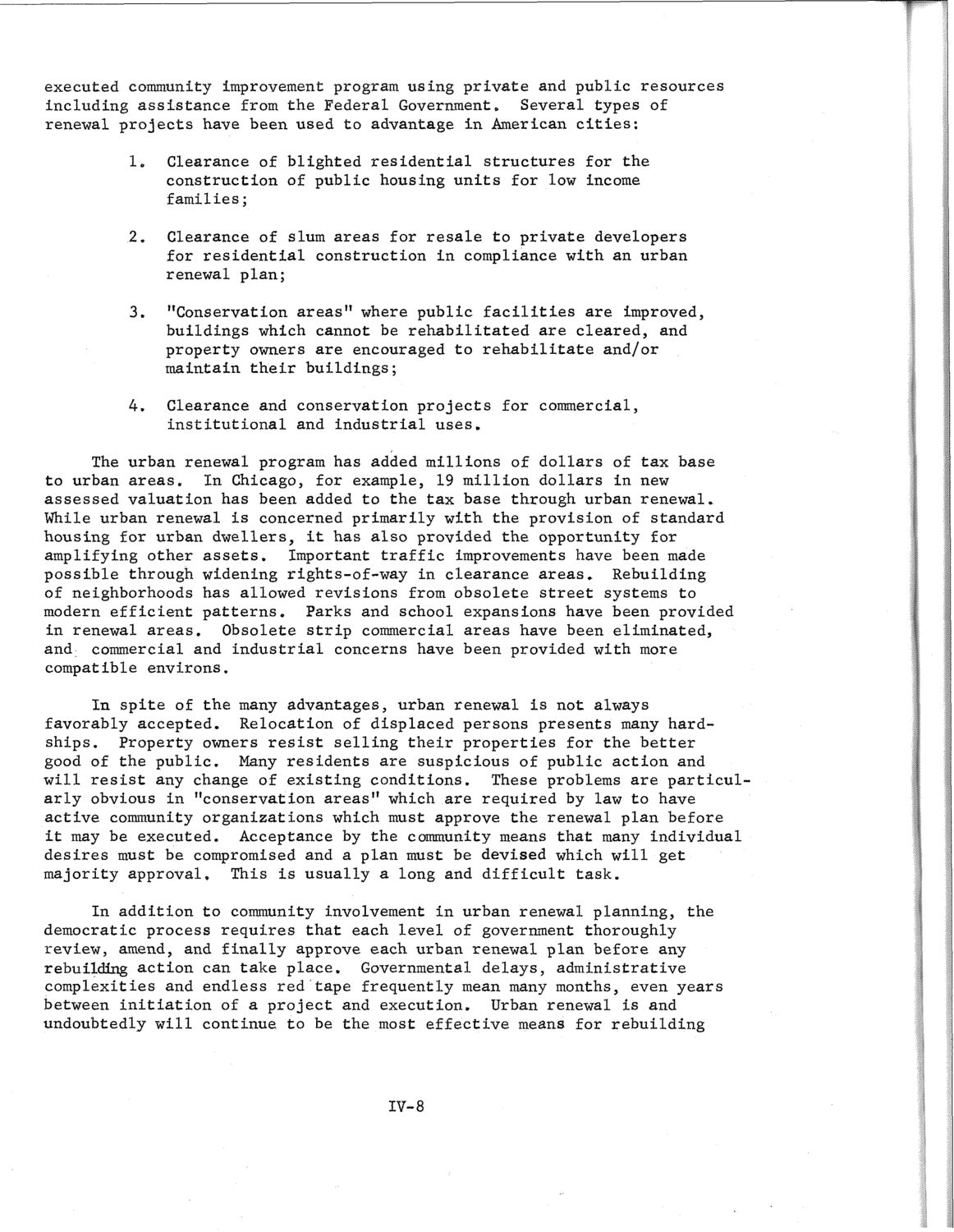| |
| |
Caption: SWE - Proceedings of the First International Conference of Women Engineers and Scientists
This is a reduced-resolution page image for fast online browsing.

EXTRACTED TEXT FROM PAGE:
executed community improvement program using private and public resources including assistance from the Federal Government* Several types of renewal projects have been used to advantage in American cities: 1. Clearance of blighted residential structures for the construction of public housing units for low income families; Clearance of slum areas for resale to private developers for residential construction in compliance with an urban renewal plan; "Conservation areas" where public facilities are improved, buildings which cannot be rehabilitated are cleared, and property owners are encouraged to rehabilitate and/or maintain their buildings; Clearance and conservation projects for commercial, institutional and industrial uses. 2. 3. 4. The urban renewal program has added millions of dollars of tax base to urban areas. In Chicago, for example, 19 million dollars in new assessed valuation has been added to the tax base through urban renewal. While urban renewal is concerned primarily with the provision of standard housing for urban dwellers, it has also provided the opportunity for amplifying other assets. Important traffic improvements have been made possible through widening rights-of-way in clearance areas. Rebuilding of neighborhoods has allowed revisions from obsolete street systems to modern efficient patterns. Parks and school expansions have been provided in renewal areas. Obsolete strip commercial areas have been eliminated, and commercial and industrial concerns have been provided with more compatible environs. In spite of the many advantages, urban renewal is not always favorably accepted. Relocation of displaced persons presents many hardships. Property owners resist selling their properties for the better good of the public. Many residents are suspicious of public action and will resist any change of existing conditions. These problems are particularly obvious in "conservation areas" which are required by law to have active community organizations which must approve the renewal plan before it may be executed. Acceptance by the community means that many individual desires must be compromised and a plan must be devised which will get majority approval. This is usually a long and difficult task. In addition to community involvement in urban renewal planning, the democratic process requires that each level of government thoroughly review, amend, and finally approve each urban renewal plan before any rebuilding action can take place. Governmental delays, administrative complexities and endless red tape frequently mean many months, even years between initiation of a project and execution. Urban renewal is and undoubtedly will continue to be the most effective means for rebuilding IV-8
| |